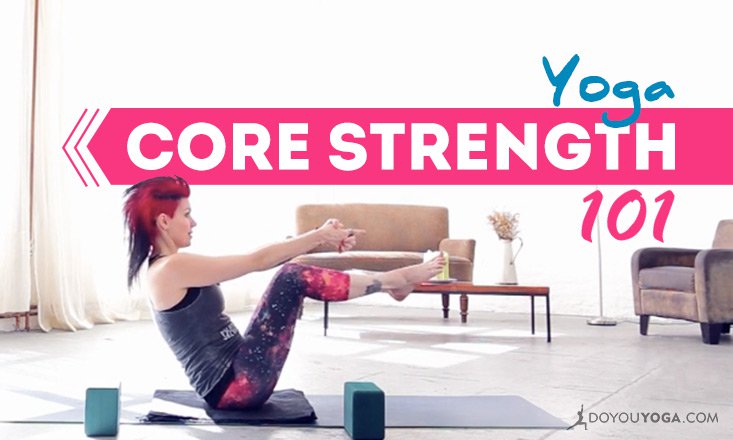Are you a yoga teacher or student? Would you like to get twice the benefits—detox, energy, strength, balance, flexibility, even calorie burn—from every active asana you do…forever?
And do all of this while increasing the safety and longevity of your beloved practice? And learn how you actually move, so as not to hurt yourself with the often-outdated classical yoga cueing?
Oh, and gain core strength too? I did.
The Myth on Abs and Back Pain
As we in the field of anatomy and research now know, there is clearly NO correlation between strengthening the abdominal muscles, and less back pain.
It’s a myth and in fact, since overly using the abs can compress down the spine and sacroiliac (SI) joints, it’s found to actually cause more back pain.
That’s why, after deeply immersing in many yoga styles, surrendering to my inner nerd, diving into a decade of anatomy, physics and biomechanics study with some of the top minds in the field, I decided to design a turbo-boosting set of movements for any and every yoga practitioner.
I Call This Core Strength Vinyasa Yoga
Hopefully this sounds simple, because it is…for you. But for me, I had to compile hundreds of hours of the latest anatomical knowledge, and couple them with the classical alignment principles to see what was working well.
I wanted to see where our yoga instruction deviates from the more democratic anatomical realities of the body.
Now, I could more clearly see why many students are getting strained and pained, or just simply not getting the maximum results they should from all the time and effort they put into coming to the mat again and again.
You’ll find out more about how you can add this to your yoga practice with my free 14-Day Yoga Shred Challenge here on DOYOU. Before you begin, though, you’ll need to know a few things.
Very basically…ish
I’ll go geek on you just for a moment, but bear with me—this could revolutionize the way you see and approach your yoga asanas, even if you are not a teacher.
- Your muscles are interconnected through lines, or meridians of fascia (connective webbing tissues). These lines run through your whole body.
- Each major line does something different: forward bend you (front body line), back bend you (back body line), side bend you (side body line), and such.
- The front and back body lines, especially the back line, are the ones we predominate in classical yoga alignment (think Inhaling up from a forward bend into Mountain Pose), which can be a problem, since these lines are particularly compressive for the lumbar spine, sacroiliac (SI) joint, and pelvic joints.
- This can wear and tear not only these areas, but your knees, wrists, neck, shoulders—all joints that have to compensate for the increased pressure on strange parts of your body due to lack of true core support.
Core support is not just about the abdominal muscles.
In fact, using them without using the next muscle line can compromise the integrity of your spinal curves in yoga posture, causing stress and strain.
Instructions like “Tuck the tailbone,” “navel to spine,” and “sternum to pubic bone” can exacerbate this.
The Deep Front, or Deep Core muscle line is the one I believe to be the most important for creating the best possible alignment, and lightness, or decompression within the joints. Yet it is not often cued properly, or at all, in most yoga classes.
This central line includes the major areas of the toes, inner arches, inner ankles, behind the shins, inner thighs, psoas, quadratus lumborum, pelvic floor and diaphragm, breathing diaphragm, and tongue.
Simply put, this is your core river of support, power and freedom.
I think of it like the police officer-alien from Terminator 2—a liquid inner you that is fluid and super-strong.
You want ninja magic powers in your poses? Moving from your floor and through the core will help you access this reservoir that is so often kept hidden or depleted by moving in the usual, more linear fashion.
The trick is in figuring out how to move from the ground up, use physics to your advantage, creating far more lift primarily through the inner core line and not all the others, in the order the line responds best to—in every, often wildly, different yoga pose.


